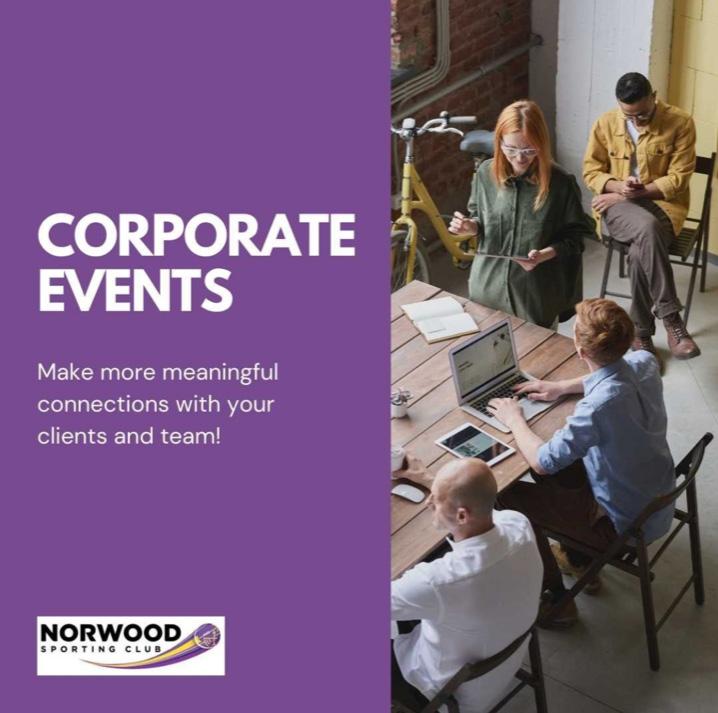
46 minute read
COLUMNIST ARTICLES
SMSF Deeds and Legal Advice
Should I use a Lawyer?
SOLICITOR
By David Heasley
A SMSF deed is a bit like insurance. You don’t know how well it protects you until the worst happens. For example, you discover the SMSF deed itself is invalid, or doesn’t comply with legislation. As superannuation and tax laws are constantly changing, SMSF deeds should be reviewed on at least an annual basis and revised as needed, preferably, by lawyers who are SMSF experts.
This situation can come about because it has been possible for several years for advisers, such as accountants and financial planners to obtain the use of SMSF and related legal templates in order that the adviser can prepare documents themselves.
Typically, the adviser pays a licence fee that permits them to download the template and prepare the documents as compared to paying a law firm to prepare an SMSF deed for a particular client.
Generally speaking, the template suppliers do not have any significant technical or legal expertise in respect of drafting documents such as SMSF deeds or other related legal documents.
But it was signed off by a Lawyer- Right?
Many non-qualified SMSF document suppliers claim that their documents are “signed-off by a lawyer”. While a reference to “signed off by a lawyer” does not have a fixed meaning, it is meant to give the impression that the document in question was prepared and reviewed by a lawyer who has approved that individual document, and not just the template. Thus, care is required when dealing with such claims.
The actual template (for example a SMSF deed) may very well have been prepared by a lawyer, any resulting completed document may not have been.
The position is likely to be clearer where the SMSF deed is supplied directly from a law firm and not from an advisor using a template. In this case a lawyer reviews the instructions for each SMSF, and then drafts documents that are appropriate to those instructions.
Can I sue the lawyer when it all goes bad?
Unfortunately, probably not. Unlike the scenario where a lawyer handles the whole matter, where the work is done by a non – lawyer there may be little or no protection for any badly done or erroneous work.
One example (of erroneous work) may be an ineffective binding death benefit nomination (BDBN) where the SMSF deed has not been varied correctly. In these instances there is unlikely to be professional indemnity insurance available to an adviser who prepares the invalid deed, as a non-qualified person is not legally authorised to prepare a legal document for a client.
In fact, most professional indemnity insurance for advisers (other than lawyers) also excludes cover for services that a lawyer must perform.
Advisers and end-users should therefore not assume that professional indemnity insurance is available. Further, some non-qualified suppliers may have no insurance cover at all, leaving the only option for recovery being to sue the advisor.
In the cases the money saved by not involving a lawyer (as competent advisors will do) may prove to be expensive indeed.

David Heasley
Principal Solicitor HEASLEY LAWYERS www.heasleylawyers.com.au 0408 611 834
Let’s get back to love!
PARENTING
By Lesley-Anne Banton
It is said that the journey out of covid and lockdowns is through vaccinations, what ever your opinion and stance on that is yours. However, the journey out of this psychologically and emotionally could be through love.
On many levels and areas in life there are stress right now and most of it comes from FEAR showing up when COVID showed up.
Have you ever watched the film ET? It’s an iconic film of an extra-terrestrial showing up after being left behind and his journey to get back home. The journey to get home for him was scary, unknown, and filled with uncertainty about the place he had been left behind in. He learns to trust those around him over comes his fear, likewise the humans around him build trust in him, rally round in love and compassion to keep ET safe and get him home.
If we use ET as a symbol that represents our fear showing up having been triggered by the uncertainty of COVID being present in our lives and not knowing what could happen, when this might leave us and what it could do while it is here.
What did ET need when he was left behind?
What is that your fear need might need, in this unknown time?
Fear is a part of you that can do unpredictable things to your thinking and actions, it can be a part of you that you shame, a part of you that you might be scared of as it might be alien to you or let it become part of your identity when it never used to be. of felt being in alone in a planet it knew nothing about? How might your fear/ anxiety/ stress react to being in an unknown planet – world of covid and being screamed at feared? What might it need to feel safe? What might it need to be ok with being there and understood?
In the film, ET quickly built trust with those around him and without full understanding of words he felt love and secure enough to put trust in those around him to help him get home.
How might you help yourself, your fear/ stress/ anxiety get back home? home to love trust and understanding?
In contrast we see the response of people in fear of ET, see him as a threat and who want to capture, contain ET and possibly destroy him. Panic has set in with them!
This can be also true with many right now, as they are in panic and want to contain, ignore or destroy their fear.
Fear and panic can be paralysing, it can cause you to run away from those trying to help you and towards those who don’t. Fear can also dominate your thoughts and prevent you from moving forward because you feel unsafe, unsure and can also make decisions that you wouldn’t normally make and be someone you normally wouldn’t be.
It was understanding, trust, compassion and love that helped ET get home. What could help you to get back to place that you know you are home within yourself? Is it love? Compassion? Understanding of where you are at?
This might be easier said than done right now yet love and understanding helps us feel safe and secure in moving forward in our lives. Notice Awareness Focus
In fear we might feel withdrawn, we might believe we have no choice, we are stuck, hopeless, attacked, angry or in procrastination. We might also be forthright, overstep other people’s boundaries with words or actions. We might make irrational decisions and statements, act in a way to ‘protect’ ourselves but hurt or disrespect others in the process, our bodies might feel a bit ‘off’, low in energy or feel we want to take flight. Whatever it is for you one of the first steps is to NOTICE this. Notice where your thoughts and thinking are at, how your body is feeling, what are your actions doing?
Once you empower yourself with noticing yourself, your thoughts, emotions, and feeling are you give your self the gift of awareness. With this awareness you can put words and understanding to where you are at and what state of mind and emotions you are in. You can then choose to change your thinking and focus to bring you back to love.
In this space ask yourself:
What would love do?
What would compassion do?
If I was in a state of love or certainty, what would I do? What would I think? Feel? Act?
As you are asking yourself these questions breath and FOCUS on yourself, calm your breathing and notice your body calming, bring thoughts of love, kindness, joy, gratitude, or whatever words bring a sense of calm and peace to you.
By bringing yourself back to a place of love and out of a state of fear you can navigate your world differently more empowered and you could help those around you come back to a place of love come back to a place of feeling like home within themselves.
If you seek further support around moving from fear to love, please contact me:

Lesley-Anne Banton
Life Coach THE PARENT WHISPERER
Compatibility Mode
GENERAL INSURANCE

By Craig Anderson
I get some frequently asked questions from businesses around whether hiring staff or hiring sub-contractors is better. While the answer can be different for each business depending on their activities and needs, and an accountant and/or solicitor may need to be consulted, my answer is simple. Whichever choice you make, the benefits must outweigh the risks, and any risks must be controlled or eliminated using the right insurance policies, and the right procedures.
If your business hires a staff member, then their actions are your actions. Your Public Liability Policy or Professional Indemnity policy should cover any 3rd party loss created by your staff, for which you would normally be found liable. Of course, there are some qualifications or registrations that staff may be required to have in order to do the job, but in general, if the third party experiences a loss in the normal execution of your business as described to the insurer, you should be covered. Pretty clear-cut.
If your business hires a sub-contractor, then the 3rd party loss they generate is still your loss. Your insurer will then want to recover the cost of that loss from your sub-contractor’s insurance. Your policy may make it a policy condition that the sub-contractor has their own cover. So what happens when you fail to check the sub-contractor is insured and it turns out they let their policy lapse or it has been cancelled due to a missed payment? Your insurer may void your policy and not pay the claim. You may even have checked the sub-contractor’s policy is current, and cancellation occurs afterward, leaving you in the dark.
If you injure a sub-contractor, you may also have to pay a $25,000 excess, which would not be the case if one employee accidentally injures another. This is known loosely as a worker-to worker claim, which are notoriously costly, hence the huge excess. (This may vary from insurer to insurer and apply more to some industries than others).
If that subcontractor relies on you for the vast majority of their work, you may inadvertently take on employer responsibilities anyway, and find yourself paying to insure them for WorkCover.
You will need advice on this from your WorkCover Insurer, and perhaps an HR Consultant if trying to avoid this when using a long term subcontractor. The key here is that whichever model you choose, or even if it becomes a combination of staff and sub-contractors, the policy you choose is of critical importance. The risk control measures to avoid losses, or avoid compounding them, are just as important.
When you “Don’t know what you don’t know” then ask the people who do, like your Insurance Broker.
Any advice in this article has been prepared without taking into account your objectives, financial situation or needs. Because of that, before acting on the above advice, you should consider its appropriateness (having regard to your objectives, needs and financial situation).
Craig Anderson
General Insurance Small Business Insurance Brokers
www. heightsafetyinsurancebrokers.com.au 0418 300 096
Insulation – your building needs it!
ARCHITECT
By Kathy Ismail
Building insulation got a bad name when the Pink Batts scandaI hit the airwaves in the 2000s. Four workers died installing home insulation as part of a federal government scheme. So, should we insulate our homes, offices, factories and warehouses?
The short answer is – yes!
Insulation may not be the exciting part of a building features but its importance is vital. Insulation has been rated as the second most important feature of a home by potential homebuyers and it should be the first priority when building or renovating. Basically, insulation regulates temperature and humidity, reduces external noise and helps reduce greenhouse emissions. Heating, ventilation and air conditioning (HVAC) systems need to be repaired more often when they are switched on for longer periods. Insulation helps to reduce the maintenance costs, and if you’re not using these appliances so often, think of the savings you’ll have in power bills!
Where to insulate
The ceiling and roof account for most of the heat loss in a building – around 40%. Walls can lose about 24% of heat, depending on the amount and kind of glass inserted in them, and even the floors can lose another 10%.
Ceiling: you should check the insulation in your ceiling as it may need a top-up. The most common insulation used in ceilings is polyester made from recycled plastic bottles and fibreglass (glasswool). Bulk ceiling insulation comes in segments that will fit between the joists above your ceiling, or in blankets that can be rolled out across the top of the joists to compensate for heat loss through the timber. If space is an issue, loose fill insulation is an option but its effectiveness and durability tend to be variable. Underfloor: Foil was once considered a cost-effective option and is still found in many older homes today. However, due to issues around safety and its reduced performance, foil will need to be replaced with a bulk insulation option. It is critical to ensure that there is no air gap between the bottom of the floor and the top of the insulation.
Walls: Bulk insulation for walls comes in pre-cut segments or as blanket rolls. To install bulk insulation into an existing wall, either the lining or cladding will need to be removed. Another solution is to add a layer of high-density plasterboard over the walls and repaint inside; this may make quite a difference and reduce external noise as well.
What to insulate with
Cellulose consists of about 80% recycled materials and is environmentally friendly. You can use cellulose to insulate the walls for your commercial buildings or warehouses.
Fibreglass, available in either loose-fill or blanket form, installed below the roof deck is effective for achieving better insulation. Radiant barrier, a reflective material like foil, helps to keep a building cool as it doesn’t absorb the heat but reflects it back to space. Install if your warehouse stores materials that require low temperature.
Liquid polyurethane is sprayed evenly on the walls or ceiling. Because it expands as it is applied it blocks cracks and gaps which lets air in.
Polyvinyl chloride is a versatile material that is moisture and humidity resistant. It is durable and strong insulation material for commercial metal buildings.
How to install
It is important that there be no gaps andno ‘crushing’ of the insulation material. Any leaks must be fixed prior to insulation being installed to avoid growth of mould inside the insulation.
It is essential that you use properly trained installers when dealing with insulation as the product will be in close proximity to electrical wiring or lighting. (The victims in the Pink Batts scandal died because they weren’t properly trained and were electrocuted.)
Heat can move through glass, wood, brick, cracks and gaps where insulation might not be able to be used. A professional will be able to advice on a complete solution to reduce your energy cost.
Especially if you are building from scratch or renovating, talk to an architect who can advise on the best and safest options for your building.
Contact KiR Architecture at contact@ kirarchitecture.com.au for help with planning your building projects. We are always happy to answer any inquiries.

Kathy Ismail
ARCHITECT KiR Architecture www.kirarchitecture.com 0422 026 962
Establishing Breastfeeding In The Early Weeks
LACTATION CONSULTANT
By Dr. Joanna Strybosh
Getting off to a good start from as early as possible after your baby is born is one of the best ways to ensure long term breastfeeding success. Here are my top tips to help you achieve that:
• Get yourself in a comfortable position. Usually a semi reclined position is best, such as laying on your back, with pillows behind your head and shoulders. You could try on your couch or on your bed. • Make sure you and your baby are comfortable and safe and you have what you need within reach - a drink of water, extra pillows, burp cloth, your phone etc. • Place your baby on your chest, tummy to tummy, in line with your breast. • Ideally, feed your baby skin-to-skin.
In other words, undress your baby down to a nappy and remove your own top. This skin contact stimulates your baby’s feeding reflexes and your milk production and letdown. • Your baby will be most stable if they are lying on their tummy, on top of you, with their legs and arms spread out. Support your baby with your arm so they are stable on top of you. • Start to learn to identify your baby’s early feeding cues - subtle mouthing movements, licking, tongue movements, turning their head are all early hunger cues. • Follow your baby’s lead - be patient and relax and give your baby time to find their target, open wide and latch on. • If your baby is having trouble latching on, offer some shaping of your breast with your free hand. Think of the way you might squeeze a hamburger before taking a big bite.
“Sandwiching” the breast, back from the nipple, can help a young baby get a bigger mouthful and make for a deeper latch. • Watch your baby’s sucking action - initially their sucks should be quicker, until your milk lets down, and then their sucks will become a bit slower and you should see and/or hear them swallowing. • If you are not sure if your baby is actively swallowing, ask your lactation consultant or midwife.
It’s important to learn to identify active swallowing. This is one way you can be confident your baby is transferring milk. • Your baby may need to take a pause every so often to catch their breath. As your baby gets stronger and more coordinated, they will be able to handle your let down better and will learn to coordinate a steady suck-swallow-breath rhythm. • Babies need to be fed 8-12 times per 24 hours, particularly in the early weeks. This means feeding every 2 to 3 hours around the clock. Some babies want to sleep longer in the day, but it’s best not to let them go longer than 3 hours between feeds in the beginning. • Do wake your baby during the day, if it has been 3 hours since their last feed. • Try to encourage a full feed each time, by keeping your baby from
“sleeping on the job”. Sometimes stroking your baby, touching their feet or face or gently blowing on them can help to rouse a sleepy baby. • Allow your baby to fully finish one side before offering the next side. • Massaging your breast gently during a feed may also help your baby take a full feed and also help drain your breast well. Use the flat of your fingers or palm of your hand. • Try to avoid introducing a dummy in the first month, or until advised by your lactation consultant. • If your baby is healthy and you are able to adequately breastfeed
from the beginning, it is not usually necessary to express your milk. This can be introduced later if needed or indicated. Your lactation consultant will be able to advise you. • After your milk has come in, (around day 4 or 5) you will know your baby is receiving sufficient milk because they will have 6 or more heavy wet nappies per 24 hours. • You will also see your baby’s stools change from black meconium through to soft mustard-yellow coloured poos. • Your baby should be settled between feeds. • Initially most babies will lose a bit of weight but then should start gaining again and be back to their birth weight by about 2 weeks of age. After that, they should put on an average of 150 grams per week. • If you or your baby are having any difficulty with feeding, get help from a lactation consultant as soon as possible.

MarkMogato
Dr. Joanna Strybosch
Osteopath B.App.Sc(Clin.Sc)/B.Osteo.Sc/Grad Dip Paeds Lactation Consultant CHILDREN’S OSTEOPATHIC CENTRE 9876 3011 www.childrensostheopathiccentre.com
Health and Safety Risks for Construction Industry Trades

OCCUPATIONAL HEALTH & SAFETY
By Mark Felton
In my last article I outlined the general obligations that employers have under the OHS Act. I will now elaborate on the risks that exist for construction industry trades businesses and workers.
Lacerations, fractures, traumatic joint injuries, hearing loss, musculoskeletal disorders, mental health issues, and lung conditions, are some of the major health risks that tradies commonly face. According to Safe Work Australia, tradespeople make up 30% of the workforce but account for 58% of serious workplace injury claims.
Hazardous manual tasks are part of a tradie’s average workday and can include:
• Sustained awkward posture • High, repetitive, sudden, or sustained force • Repetitive movement • Exposure to vibration. Such tasks can lead to musculoskeletal conditions, such as:
• Muscle, ligament, and tendon sprain or strains • Back injuries • Degenerating joints and bones • Nerve injuries or compressions, including carpal tunnel syndrome • Soft-tissue injuries • Chronic pain
Tradies in the construction industry also have a higher risk of experiencing mental health issues than workers in other professions, research has found.
Employers must manage the health and safety risks of staff undertaking hazardous manual tasks, requiring them to analyse work systems, workplace design, and layout, including environmental conditions. This will provide insights into minimising the risks.
Proper documentation of these systems is crucial, including the results of reviews and the follow up that has taken place. You can have the best systems in the world but if you don’t properly document things, who can see this? How do you demonstrate to WorkSafe Victoria that you are serios in your efforts to safeguard the health and safety of your employees?
So what does this mean for you and your business? What steps do you need to take to ensure that you are in step with your obligations to keep yourself and your employees health and safe? How do you keep yourself safe from prosecution? This is where I, Mark Felton at Beaumont Advisory, can provide guidance and support, and provide peace of mind. I can be contacted on 0411 951 372 or mfelton@beaumontlawyers.com.au , and offer a cost and obligation free initial meeting to review your current position.

Occupational Health & Safety BEAUMONT LAWYERS www.thebeaumontgroup.com.au

How Healthy is your Home Loan? Time for a Home Loan Health Check
MORTGAGE BROKER
By Jodie Moore
As a mortgage broker I regularly come across people who have had a Home Loan with the same lender for five years or more. They have simply been paying the required repayment without ever thinking about what the current interest rate is, the fees that are being charged and what other lenders may be offering. So how can having a Mortgage Broker conduct a regular Home Loan Health Check benefit you?
There is one very significant reason why you should have your Home Loan regularly reviewed: TO SAVE YOU MONEY.
In the current environment it is a mistake to assume that your current Home Loan is providing you with the best value. By having your loan reviewed a Mortgage Broker may be able to present products from lenders offering lower interest rates than you are paying currently. This could potentially save you thousands on interest costs or help you pay your loan off sooner. You may also have some smaller debts, such as credit cards or personal loans, that are charging higher interest rates but could be consolidated into your Home Loan. This could help repay these debts sooner by reducing the costs of these debts but would also simplify your finances, reducing the number of loans and repayments being made to multiple lenders.
Even without refinancing your Home Loan to another lender, your Mortgage Broker may be able to negotiate a better deal with your current lender. It costs a lender a lot more to attract new borrowers than to keep their existing customers, which is why they invest a lot of money in business retention teams. By looking at what competitors are offering your Broker can use this information to leverage a lower rate with your existing lender.
Another benefit of having a Health Check is to ensure the type of loan you have remains the most suitable to meet your current needs. Offset, redraw, the ability to make extra repayments or switching your rate between fixed and variable rates are all options your Mortgage Broker can review for you.
It is also important to note that a mortgage broker is required to act in their client’s best interest by law, which is different to the requirement on a lender when you deal with them directly. That is why the best person to review your Home Loan is your local Mortgage Broker. At Find Home Loan we are already proactively helping our clients negotiate a better rate with their current lender, reviewing their existing loans and discussing ways to potentially save our clients thousands of dollars. We would love the opportunity to help you too.
Please call Jodie Moore on 0402 513 213 should you want to discuss your options.

MORTGAGE BROKER FIND HOME LOAN www.findhomeloan.com.au
Elderly loved ones need to be heard!
ACCREDITED EDITOR
By Susan Pierotti
There is an ancient African proverb that goes something like this: ‘When an old man dies, a library burns to the ground.’ As there were few libraries in ancient Africa, what does this mean? Libraries are collections of books, of people’s words, thoughts, dreams and visions for the future. They are also a deposit of memories.
Next time you are in your local library, check out the extent of the biography and history sections. All those books are records of people’s impressions of the past that now enable us to develop new and better destinies if we learn from them.
While you’re there, check the names on the book covers. Do you know them? Are they famous? Some are, many aren’t. Many were in fact ‘ordinary’ people who told extraordinary stories. These kinds of people live all around us. You know and are related to them – they are our grandparents, our neighbours, the lollypop lady at the school…Everyone has an interesting story to tell.
Older people tell the best stories
According to science, it’s a fact that older people are the best storytellers.
A study by the European Journal of Cognitive Psychology showed that while older people are often hindered by a decline in working memory, they more than make up for this with an exceptional storytelling ability that proves the adage: the older you get, the wiser you become.
When a group of college students was asked to recall recorded stories from people of disparate age groups, they overwhelmingly remembered more of the stories told by older individuals.
There are a few reasons this could have been the case:
• Researchers speculate that the characteristics of older people's voices are better suited to conveying oral information. • Younger people have an association with older people telling them stories as it’s thought that this might evoke memories of their own grandparents
telling them stories when they were younger. • Older people make a conscious attempt to make stories as entertaining as possible, even if it means shunning objective accuracy to do so.

So it may be in part a self-fulfilling prophecy, but it's a confirmed scientific fact that older people are the best storytellers!
Why record older people’s stories?
Besides older people loving to tell stories, they also love to feel valuable. After they have brought up children, worked hard, paid their taxes and maybe fought in the war, when their bodies start to decline and finances can be a bit stretched, they are often lonely. Their friends have dementia or have begun to die, their families are far away or don’t visit often (even with the best intentions) and they don’t speak the language of the nextdoor neighbour from a foreign country.
How sad that after a lifetime of contributing to society, no one seems to want to know them, to value them, to think they are important still. The 2020 COVID lockdown highlighted this with the shocking cases of neglect in some nursing homes.
Did you know that half an hour over a cup of tea with an older person do wonders for their self-esteem? And what better way to give them that sense of importance than letting them star in their own story!
How to begin
Now, being pragmatic, we don’t have the time to devote to our elderly loved ones as much as they would like. There is work to be done, children’s activities to plan and go to, business meetings, the shopping, the washing etc.
One solution is to hire a life story professional, someone who has the time, to bring out your loved one’s best stories and make sure the story creation process is a fun and memorable experience. They will think of things to ask that the family take for granted without really knowing the details. The older person will blossom as it will be someone not related to them now paying attention to their every word. Stories will come out that have been hidden for decades, uniting families and cementing identities.
So, build the legacy your elderly loved ones deserve!
Creative Text Solutions is a member of Life Stories Australia that assist people to tell their stories in many different formats. Contact us today at susan@creativetext. com.au to help you record your elderly loved ones’ stories.
Susan Pierotti
Accredited Editor Creative Text Solutions 0437 127 159 www.creativetext.com.au
What Builders Need To Know About Installing Garage Doors
GARAGE DOORS
By Chantal Djuric
Can you remember what you were doing nine years ago? Let me take you back to the evening of 3 February 2011. You may have been enjoying a barbecue in the garden, the kids were probably grumbling about being back at school or possibly you were all down at the beach.
The people of north Queensland were busy battening down the hatches on everything that moved, preparing for the most horrific night of their lives. About to hit their homes was the largest cyclone to invade Queensland since 1918 – Cyclone Yasi.
The storm caused an estimated $3.5 billion in damage, making it the costliest tropical cyclone to hit Australia on record. Overall, approximately 1,000 people reported significant damage to their homes. In Townville, roofs were torn off buildings and sent hurtling down the streets. Residents reported the sound of glass breaking throughout the night as windows were broken as the storm moved through. There was also severe damage to the fittings and outside fabric of people’s homes. One of those items on the outside was garage doors.
Colin Blair, CEO at the time of Standards Australia, reported: ‘It became clear that garage doors were a point of weakness during Cyclone Yasi. As a result, our technical committee has updated the Australian/New Zealand Standard to improve building resilience.’
The AGDA is the industry voice of the Australian Garage Door Industry, set up to promote professionalism, safety and compliance for all the products and installation involved in the largest and heaviest moving part of a building; namely, the garage door. At the time of Cyclone Yasi, the President of AGDA, Mike Fraser, lobbied the government to enforce full mandatory compliance to Australian and New Zealand (ANZ) standards to achieve building resilience.

Things builders need to know
Mike Fraser said: ‘The responsibility does not fall on one party. It is in fact the responsibility of the installers, builders and designers of buildings to ensure compliance in relation to garage doors, not just manufacturers.’
The relevant Standard for Doors (as noted in the National Construction Code/ Building Code of Australia for cyclonic wind areas) is cited as AS/NZS 4505:2012 ‘Garage doors and other large access doors’, and includes information that installers, builders and building designers need to have an understanding of, such as information regarding the loads that the doors apply to the buildings, as well minimum performance requirements for structural loads applied to the substrate to which the door is affixed.
This Standard for Doors applies to the whole of Australia, not just in cycloneprone areas.
You as a builder also will need to obtain an occupancy permit if the building work will adversely affect the structural soundness of the building, including the garage.
Working with a garage door technician
The good news is that garage door technicians prefer to collaborate with builders concerning garage door installation. There are several advantages for the building owner when this happens. builder, will get a discount price due to the quantity of doors you buy for all your other current projects.
Builders get also get the warranty that the building owner would get; this means that the garage door itself is covered from the time of purchase, not just after it’s installed.
If you’re a builder, give the garage door business you’re working with a copy of your OH&S standards before the technicians arrive onsite as these are what garage door technicians will follow. When it comes to invoicing, don’t be afraid to ask a package rather than itemised and separate invoices, if that’s your preference to suits your budget. An experienced garage door business will expect this.
If you are working on a repair job for insurance purposes, an professional garage door business will understand the need for timely repairs to meet your and the insurer’s KPIs, they will have ready and open communication between the insured and the case managers and offer a good standard of workmanship.
For 24/7 garage door servicing, give Cruzin Garage Doors a call on 0427 894 603 or email us at sales@ cruzingaragedoors.com.au.

Chantal Djuric
Garage Doors Cruzin Garage Doors www.cruzingaragedoors.com.au
Make Sure Your Business Gets the Attention It Deserves
SIGNAGES
By Glenn Martin
Right now, more than ever, it is imperative to stand out from the rest. Let your local community know that you are open, professional and ready for business. At Signarama, we understand the value of creating quality signage to promote your brand and drive sales. We have worked with many well-known national and international brands across a wide range of industries. From A-Frames and Flags, Window Decals, Floor Decals, Corflute Signs, Café Barriers and much more, our team of experts will help you create eyecatching and effective signage solutions to suit your brand and budget.
A-FRAMES
A-Frames are a popular form of freestanding signage due to their durability, mobility, customising options, and versatility as a sales tool, for indoors and outdoors. Interchangeable corflute or composite panels are a great solution when you need to change your signs often. You might want to add a chalkboard, or whiteboard section, so you can write your own messages. Standard sizes are 450mm x 600mm, 600mm x 900mm, and 900mm x 1200mm.
A popular and effective signage option for both indoors and outdoors, flags are printed through dye sublimation on fabric material for maximum durability. They are lightweight, easy to assemble, portable, weather resistant and can be single or double-sided. Our most popular flags are Feather and Teardrop. Feathers are great for their movement in the wind, while Teardrops stay taut and offer a focal point. Customised flag shapes, poles, grass spikes and other bases are all available depending on your application.
FLOOR DECALS
Transforming your floors into an advertising space, floor graphics are gaining popularity in shopping centres, trade shows, airports and high traffic areas for brand awareness, wayfinding, safety signs and promotions.
A-FRAMES

FLAGS

FLOOR DECALS

CORFLUTE SIGNS


Our graphics are printed in full digital colour onto a self-adhesive vinyl with anti-slip and scuff resistant laminate on top. The vinyl we use will depend on how long you need the graphic for. We can die-cut to any custom size or shape. The floor should be a smooth sealed surface, like painted concrete, tiles or laminated floors.
CORFLUTE SIGNS
Corflute can be thought of as plastic corrugated cardboard. Suitable for both indoor and outdoor use, corflute signage is a cost-effective solution for advertising or informational signage. Popular with real estate agents, sporting clubs, construction sites, and event organisers. It is easy to handle and set up and can be cut to any size to suit your requirements. You may also choose to have eyelets to easily attach the signs with zip ties. Corflute can be printed in full colour on one, or on both sides. They can be finished with UV and weather resistant vinyls for that added protection.
WINDOW GRAPHICS
Window decals, or window graphics, are a very effective way for any business to showcase their brand, top selling products, services or creative flair. Window graphics can be solid, translucent, one way vision, frosted, full or single colour, everything we make is custom and we love creative design challenges. Have a signage project in mind? If you already have a design, simply send us the files and we will be in touch to start the process, including a free consultation and site audit to help your business stand out from the crowd. If you’re unsure of exactly what you want to say, or how you’d like it to look, that’s okay too, just contact the team on 1300 633 902 and together we’ll create the perfect signs for your business and to ensure you get current promotions, follow us on Instagram @Signarama_Mitcham.


CORPORATE EVENTS

Make more meaningful connections with your clients and team!

enquieries@norwoodsportingclub.com.au
Favourite Coffee Cocktails
COMMERCIAL COFFEE MACHINE
By Ivana Smith
On a rainy dull day, imagine a log fire merrily burning at your feet and toasting your toes, wrapped up in a snuggly rug, your beloved by your side. Your hand reaches out for a mug of coffee...Now expand that image further – what if that coffee were a coffee cocktail?
Cocktails served hot
You’ve probably heard of Irish coffee. The invention of this drink was first recorded in 1943 when a plane was forced to make an emergency landing in Ireland due to bad weather. The local chef and bartender, Joe Sheridan, combined Irish whiskey with coffee to warm the passengers up. They didn’t complain, and neither have the millions who’ve enjoyed it since!
To make one, heat a glass and pour hot coffee into it until it is three-quarters full. Add two sugar cubes, fill to the top with Irish whiskey and top with cream – simple but potent and delicious! It is still one of the world’s most popular coffee cocktails.
There are so many variations on the Irish coffee. Replace the whiskey with bourbon for a Kentucky coffee, or tequila and Kahlua for a Mexican. Here’s the French version, called café amore: replace the whiskey with an ounce each of cognac and amaretto and top with whipped cream and slivered almonds – very chic!
If you would like to experiment with flavours, as a general rule, Baileys and coffee-flavoured liqueurs Kahlua and Tia Maria are most often with black coffees, but you can also spice up your cocktail with whiskey, bourbon, rum or vodka. Vanilla-flavoured vodka adds a particular sweetness, whereas caramel vodka will add a major flavour boost to milk-based coffee drinks such as macchiatos or lattés.
So cool cocktails
Try pouring a shot of Amaretto (almondbased) or Frangelico (hazelnut) over an affogato. But there’s more!
As a summer refresher, why not indulge with a White Russian. Fill a glass with ice and pour in vodka, cold milk or cream and cold coffee brew – easy, quick and amazing! You could also try a Kahlua coffee soda. Fill a glass with ice, pour in 1½ ounces of Kahlua, coffee and add 2-4 dashes of bitters, fill with soda water, top with cream. For a Kahlua iced coffee, replace the bitters and soda water with cold milk.

Then there’s the iconic Espresso Martini. Remember to cool the coffee first before shaking it up with 60 ml combined Kahlua and vodka. The iconic frothy layer on the surface of comes only from real espresso coffee from a proper coffee machine that gives you a nice crema (the velvety layer of foam on the espresso). Using instant coffee granules, a plunger or anything similar won’t give you the same result, no matter how vigorously you shake the cocktail shaker. If you don’t have a proper coffee machine, just add egg white; without altering the taste or texture of the cocktail, once shaken, the egg white makes an awesome froth on the surface. By the way, you need the foam to float coffee beans on the top. An Espresso Martini has a high alcohol content, the equivalent of standard drinks, but the flavour of the coffee flavour disguises the alcohol – beware!
What do you drink on a dark and stormy night? A Dark and Stormy cocktail, of course! Fill a tall glass with ice and pour in 25 mls each rum and tequila and stir. Top with ginger beer and slowly pour in cooled espresso. What a zing!
Cocktails for under-18s (and adults!)
Non-alcoholic coffee cocktails can be made by adding syrups with flavours such as hazelnut or chocolate liqueur. Top them with cream, ice cream and shaved or sprinkled chocolate and or silvered nuts.
The Coffee Orange Mocktail one is so simple to make, you could make in the office. Pour the juice of half a freshly squeezed orange into a glass, add ice cubes and soda water. Stir in a teaspoon of honey into hot coffee and pour over a spoon onto the ice cubes. Give a final stir before enjoying!
Be aware that coffee cocktails tend to be sweet, adding a fair amount of sugar in each glass. One a week as a treat would be plenty – though they are so delicious that more than one is very tempting!
For advice on coffee and how to supply it to office spaces, workplaces and clubs, contact Ivana at ivana.smith@ xpressodelight.com.au.
Ivana Smith
Commercial Coffee Machine Xpresso Delight 0418 393 085 www.xdcoffee.com.au
SMSF Trustees need to prepare for the Retirement Income Covenant (RIC)
FINANCIAL PLANNING
By Warren Strybosch
The Retirement Income Convent is set to come into force on 1 July 2022, and this will apply to all superannuation funds including Self-Managed Super Funds.
The retirement income covenant (RIC) proposed by the federal government in 2018, that was meant to be in force in 2020, and now looks to come into effect on 1st July 2022, will require all superannuation funds, including SMSFs, to have a documented strategy to identify the retirement income needs of fund members and provide a plan to service those needs.
When the position paper was first released, the Digital Economic Minister, Jane Hume, said: “The introduction of the retirement income covenant is an important step in encouraging the further development of the retirement phase of superannuation.
“The covenant will codify the requirements and obligations for superannuation trustees to improve retirement outcomes for individuals, while enabling choice and competition in the retirement phase.”
Sally Evans, director at Allianz Retire Plus, when discussing the proposal, said: “The covenant is essential because our industry is so heavily weighted to the accumulation phase of retirement. A covenant will help us focus on the purpose of superannuation and what is the right way for individuals to smooth their income to last a lifetime”.
Currently, retirees are unwilling to draw down their capital in retirement for fear of running out of money. Allianz Retire Plus surveyed many retirees, and 61% were fearful of running out of money more than they were worried about dying.
“People don't know how long they will live, how long they will work or what their health status will be. Those uncertainties play out in fear and a lack of confidence. That creates an enormous challenge for people to overcome,” said Evans. they believe it is possible for retirees to increase their standard of living by better utilising their assets in retirement.

It is likely to lead to a greater variety of products being made available after the covenant comes into play. Dr Deborah Ralston, who sat on the Retirement Income Review, said: “I can see in a decade how superannuation funds will have a portfolio of products sitting on their platforms for retirees to help them through that phase of life.”
However, it is our belief that many products will come and go, and retirees will find it hard to move away from the products they are so familiar with e.g. allocated pensions with access to a variety of investment options, and lifetime income streams or annuities providing a guaranteed income stream.
What we are sure of is the additional cost this will place on SMSF Trustees, who will be required to provide an Investment Strategy that meets these new requirements related to the RIC. The paper states: “Trustees are required to formulate, review regularly, and give effect to a retirement income strategy for the retired members of their fund, and the members of their fund approaching retirement. The strategy can be formulated for all members in generality, or cohorts of members in generality, as identified by the trustee.”
Already we have seen auditors requesting more details regarding the investment strategy. Given most accountants cannot develop an investment strategy, trustees have had to engage financial planners to prepare the investment strategy which has placed increased costs on the SMSF members. the RIC requirements. Our opinion is that modelling will have to form the basis of each investment strategy so that trustees can demonstrate how the investments will give effect to member’s retirement. In other words, the investment strategy will need to show that the investments will indeed benefit the members and compared to other options, it was a suitable one at that. It will also need to be reviewed annually.
Interestingly, according to the paper, the development of the retirement income strategy would not fall under the provision of giving financial advice to members. The paper states that “the retirement income strategy expresses the broad actions the trustee will take to assist their members to balance key retirement income objectives and does not consider the specific circumstances of individual members.” We believe this is wishful thinking now that the Westpac has lost their case in the Supreme court where the mere consideration of a client’s information is now deemed to be providing financial advice.
Given the retirement income strategy will need to take into consideration the members balance, future goals, risk profile, age or retirement and so on, it is more likely the development of the RIC will require input from financial planners.
The paper is open for consultation until 6 August and further consultation on exposure draft legislation will take place later this year.
Subject to the passage of legislation, the covenant will commence from 1 July 2022.
All in all, SMSF trustees can expect the ongoing costs of managing a SMSF to rise.



The trip of a lifetime
If you were planning the trip of a lifetime, no doubt you’d make a list of all the things you wanted to see and do. You’d work out an itinerary and a budget and start doing the things that would make your dream a reality.
At [XYZ Financial Planning] we help people just like you with questions like these:
Where is the money going and how can we manage ‘smarter’? Can we send the kids to private school? Can we buy an investment property? What about working less/going part time?
How can we save for a home deposit? Can we have the house we want? Do we go round the world on a cruise or see Australia by caravan?
How can we repay the mortgage sooner? Should we move or renovate? Are our investment properties working for us? How can we help our kids get ahead?
If one of us has a career break, will we be okay? When can we retire?
What if we retired earlier?
Our strategic advice service is aimed at helping you see all the options you have for your financial trip of a lifetime, so you can make good decisions. We’ll show you a detailed before-and-after picture of your finances and discuss different ways you can improve your outcomes. Then, when you’ve decided on the path you want to take, we will help you along the way.
To plan your trip of a lifetime contact our office today on XXXXXXXX or To plan your trip of a lifetime contact our office today on 1300 88 38 30 XXXXXXX to schedule an appointment.to schedule an appointment.
This information is intended to provide general information only and has been prepared without taking into account any particular person’s objectives, financial situation and needs (‘your circumstances’). Before acting on such information, you should consider the appropriateness of the information having regard to your circumstances. [ClearView Financial Advice Pty Ltd] or [Matrix Planning Solutions Ltd] claims copyright in this material and no part may be reproduced without its permission. [Company name], Corporate Authorised Representative [Corporate authorised representative no] of [ClearView Financial Advice Pty Ltd ABN 89 133 593 012, AFSL No. 331367] or [Matrix Planning Solutions Ltd ABN 45 087 470 200, AFSL and ACL No.238256].
10 essential reasons why you need an adviser


Planning
Building your customised plan, regularly reviewing it, making adjustments and monitoring progress to help achieve your goals.
2 1
Financial security
Building wealth and protecting your future with insurance.
3
Keeping you accountable
Education and coaching
Coaching and education to prevent reacting to short term volatility and trends which undermine long-term objectives. Avoiding the psychological effect of buying high and selling low.
Tracking progress towards your goals
Checking you are on track for lifestyle goals and retirement, adjusting insurances as your needs change.
6 4
Rebalancing
Avoiding unnecessary risk with market movements and ensuring asset allocation remains aligned to your life stages and helps you reach your goals.
8 5
9
Tax-smart planning
Ensuring that investment structures are the most tax effective and strategies are maximising available concessions. Staying up to date with relevant tax laws and changes that will impact you and helping you to avoid unexpected surprises.
7
Preventing mistakes
A lot can go wrong without signifi cant time and skill to implement, monitor and adjust your fi nancial plan. Assisting with insurance claims to make sure you get the right outcome.
Update strategies when your life and legislation changes
Sounding board
Ongoing access and help from someone who knows you and your situation.
10
How much value can a fi nancial adviser add? 5.2%+p.a.*
(Asset allocation 0.9%, Behavioural mistakes 2.2%, Cost of cash 0.6%, Tax effective investing 1.5%) *2020 Value of Adviser Report from Russell Investments

Current Services
View current services
It's great to be able to welcome you back to the library!
Most libraries currently have a limit of 100 people at any one time, with the exception of Bayswater (85), Belgrave Express (30), Montrose (34), Mooroolbark (78), Realm (100 per floor/300 in building), and Yarra Junction (94).
Call + Collect services remain available if you would prefer contactless service. Call your local library to arrange a selection of library items for collection.
In-person Storytime has been suspended until further notice. In the meantime, Online Storytime is continuing on Facebook, weekdays at 11am. Kids can also enjoy a wide range of 'boredom buster' activities on our YouTube page, presented by our Children's Librarians.
Conditions of entry:
• Library Users must register their visit by using the ERL QR Code Kiosk or by registering via their own personal device (a family group can enter one registration). • A face mask must be worn at all times, unless the person has a *lawful reason not to. • The hand sanitiser provided must be used before entry to the library. • Please do not enter the library if you are unwell. You may be requested to leave if you display any symptoms of being unwell. • Whilst every care will be taken, library customers are using our facilities at their own risk. • In the interest of health, safety and well-being to all, members must comply with all directives from the nominated Officer-in–charge.
Celebrate National Science Week at Your Library!

National Science Week is Australia’s annual celebration of science and technology. From 14-22 August, Your Library will be coming to the party with a great range of events and activities for children and adults!
Events include:
• Family game night • Cheesemaking • Build your own computer • My invention, my story • Art with robots, and more! • Bookings essential as places are limited!
View Program

Meet Merryn Glover
Thursday, 12 August at 7pm - Online event
Join us for an unmissable live digital event with Merryn Glover for the Australian launch of her new novel, Of stone and sky. The hour includes readings, author interview, Q&A and videos of the book's stunning Scottish Highlands setting.
This is a FREE online event - bookings are essential. Please attend using your internet connected computer or mobile. The event's URL will be delivered to your email inbox before commencement. Book Now

Short story competition
Enter Now
Students living or studying in the City of Maroondah are invited to submit a short story (max 200 words) answering a question about a special older person in your life, for a chance to win a $100 book voucher.
Base your short story on the question from the correct category:
• Preschool to Prep - Why is your special older person great? • Primary School - How has an older person helped you in your life? • Secondary school - How has an older person shaped/changed your life?
Closes 8pm Wednesday 1 September.
This competition is part of Maroondah City Council's 'Tackling Ageism Together' initiative.



